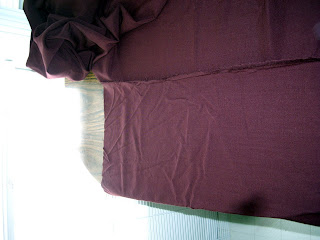Here's the pattern (if you can call it that), it's very simple. This works best if you can get a piece of fabric as wide as your wrist to wrist measurement plus a few inches for a hem. I worked with a piece of green fleece 62" wide. Get a warm fabric (wool, fleece, etc). You will need a length double the measurement from your shoulder to approximately your knee.
Fold your fabric in half length wise and then again width wise.
At the top corner where the folds are cut an oval or triangle 1/4 the measurement of your neck.
Cut 1 layer from the neck opening to the botton along the folded edge to make the front opening.
Run a hem all around the edges.
Here is where you need to decide what you want for a collar. I recycled an old fox collar from a coat of my grandmother's. I hand stitched it to the neckline.
I sewed a button a few inches from the open edge under the collar and used a piece of elastic cord to make a button loop on the opposite edge.
To close up the arm area by the wrist fold the cape in half and take a few stitches by hand about 5" or so down from the edge on both sides.
Done.
Lessons learned:
1. Fleece is very warm, but it leaves behind a LOT of lint. I had to clean it out of my machine twice while sewing up the hems.
In The Year of the Plague- 2020
3 years ago










